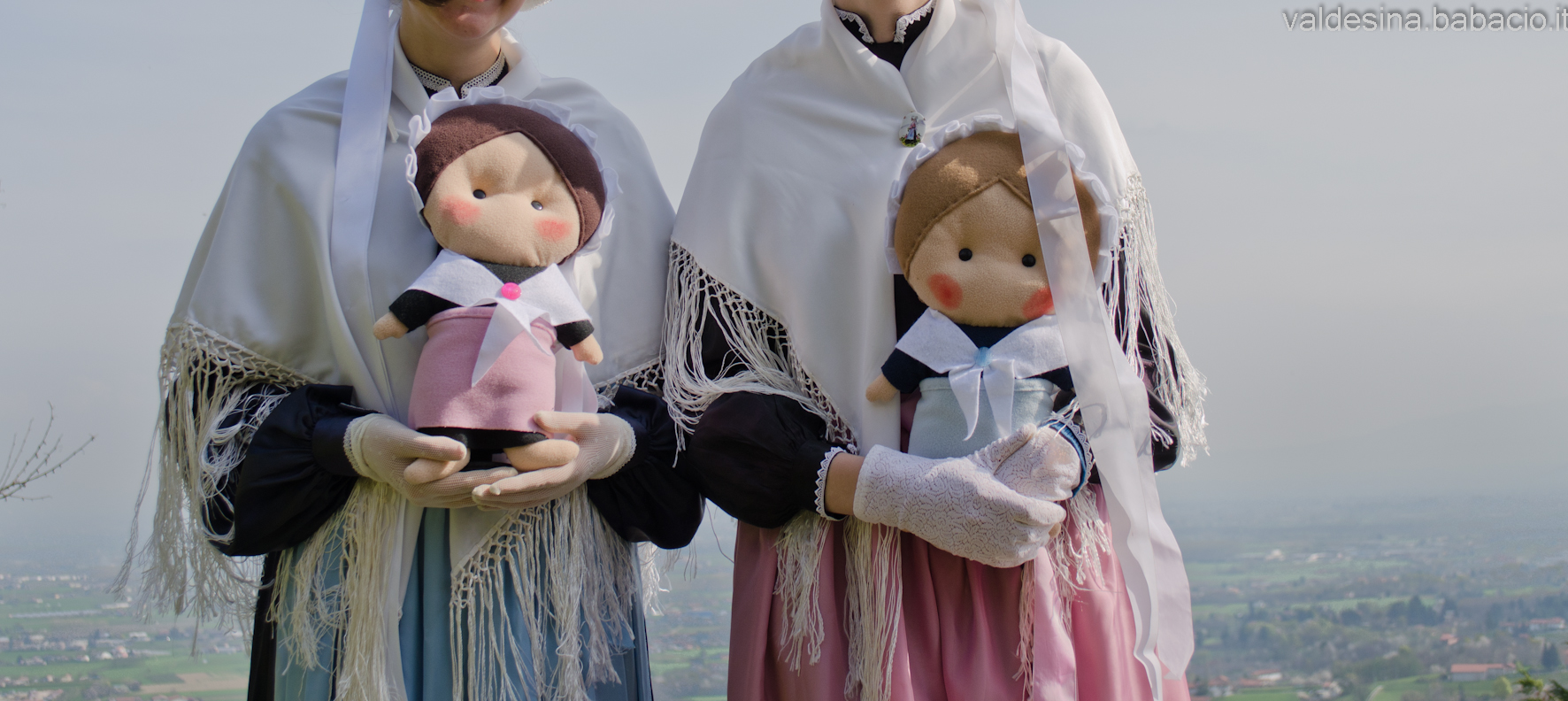Hello, my friends! Nice to see you again!
Today I am very happy, ’cause I’m gonna tell you something special. Next Sunday, in fact, will be Palm Sunday and for tradition Waldensian boys and girls will receive Baptism or Confirmation.
Very often in Waldensian tradition children are not baptized when they are infant, but they first learn the Catechism and then decide at 16 whether to become members of the church and get baptized at that age. On the other hand, the ones baptized as children will receive Confirmation to tell the community that they intend to continue their path in the Waldensian faith.
On Easter Sunday, Communions are celebrated; in that occasion boys and girls formerly baptized or confirmed become effectively members of the Waldensian Church.

On these two Sundays it is customary for girls and women to wear the traditional Waldensian dress, just like the one I wear too!
It is a very elaborate costume, consisting of several elements, and if you’re curious to learn something more about it… well, that’s why I’m here today!
First of all you have to know that in the past this dress had no religious connotation, but it was just the most beautiful dress that women used to have and, therefore, they would wear it only on special occasions. It was so precious that it was also used as wedding dress!
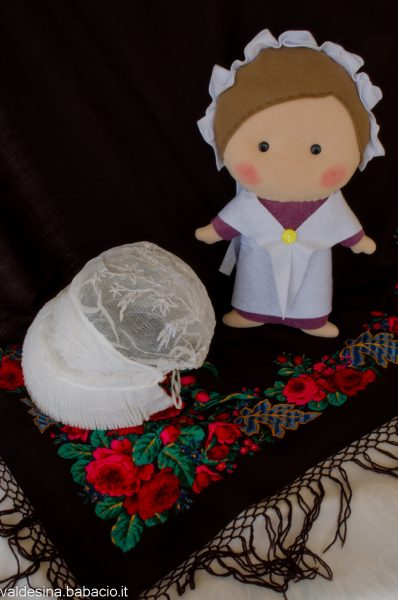
All of the women from the Valleys used to wear it on Sundays to go to church, but it was slowly abandoned by Catholic women and it became typical for Waldensian women.
Let’s see together how it’s made up!
The dress, which is very long, is ankle-length; it is composed of a corset closed on the front side with buttons, it has a high collar decorated with lace, as the wide sleeves tight to the wrist are. It is usually dark blue, black or purple, sometimes in damasc, made of wool for winter and of cotton for summer.
Around the waist an apron is tied with long ribbons; it’s a bit shorter than the dress, it is made of silk and it is usually changing blue, purple or black, but anyway matching the dress.
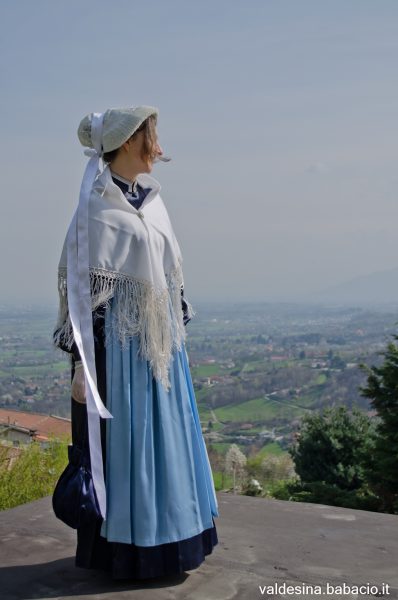
On the shoulders it is used to wear a white or black shawl, with long fringes and floral embroidery on the back, pinned with a brooch on the front. Once shawl used to be in much brighter colors (red, purple, turquoise), but today those shawls cannot be found any more! In ancient times it was used to wear a black silk cloak crossed and tied at the waist on the back.
Gloves and a bag made in the same textile as the dress complete the outfit.
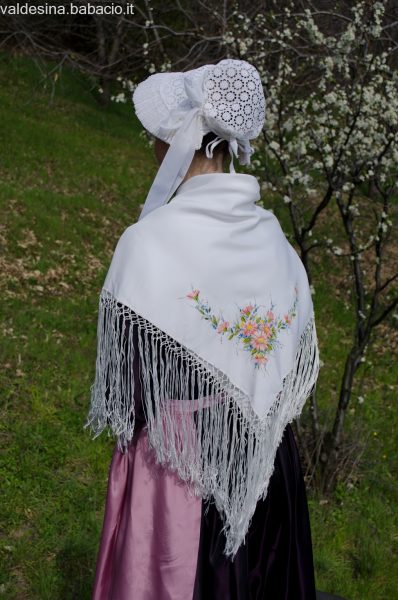
The most characteristic element of the Waldensian costume, however, is the bonnet, a precious hat of medieval origin that is handed down within the family. Its making is very complicated since it is composed of three parts: a front part composed of a pleated lace ribbon 7 meters long that frames the face, an intermediate part made of tulle or light cloth and a rear embroidered part made in tulle that encloses her hair; the bonnet is then held closed by a white long silk ribbon that is dropped along the shoulders. According to the tradition, girls not confirmed yet should wear a black bonnet…
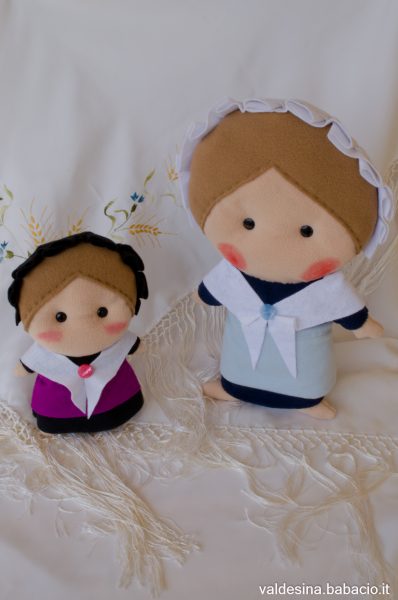
What else can we say?!
My friends and I wish you a very happy Palm Sunday!
Do you want to read the tale in Italian ?
